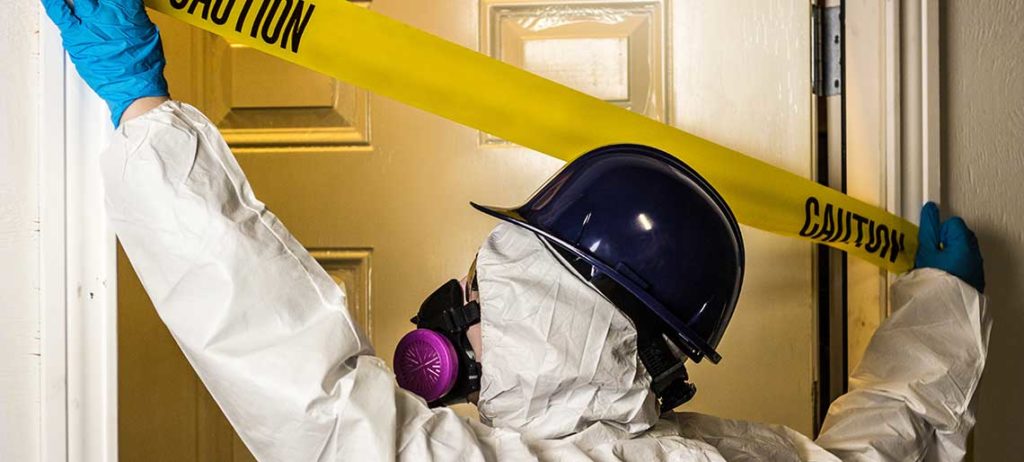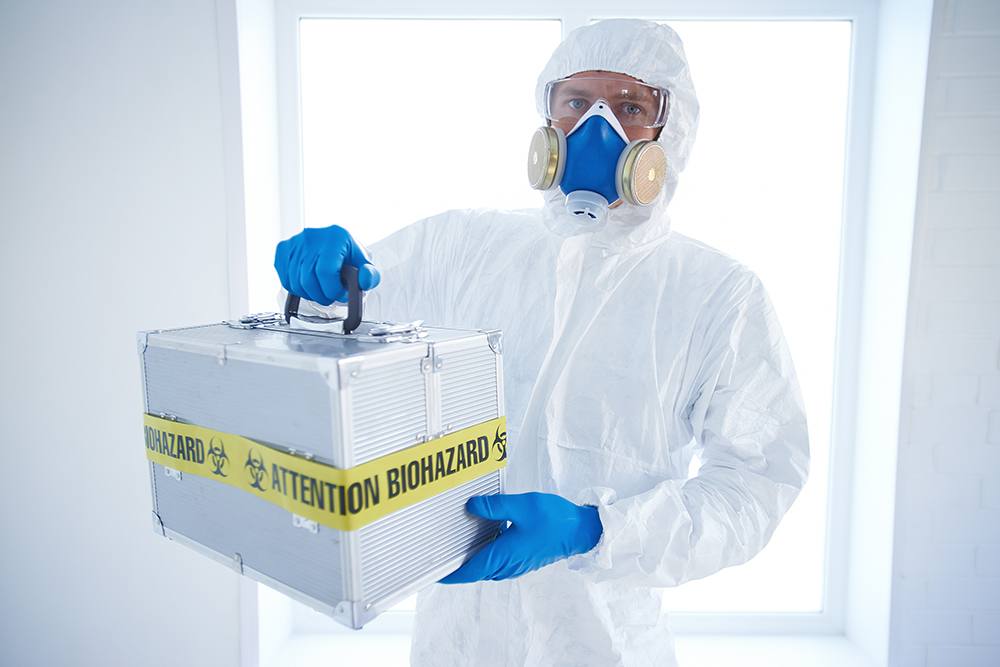Professional Biohazard Cleaning and Decontamination for Blood, Bodily Fluids, and Hazardous Materials
In the realm of biohazard cleaning and purification for blood, physical liquids, and unsafe products, precision and expertise are paramount. The possible wellness dangers related to direct exposure to biohazards emphasize the vital requirement for meticulous handling and thorough cleanup. Specialized training furnishes experts with the understanding and abilities necessary to attend to these unsafe circumstances effectively. Nonetheless, it is not merely concerning cleansing up; the significance of using proper purification methods can not be overemphasized. As we navigate the intricate landscape of biohazard cleanup, understanding the subtleties of policies, conformity, and the customized devices at play becomes imperative in making certain a complete and safe decontamination procedure.
Wellness Threats of Biohazard Exposure
Exposure to biohazards positions considerable wellness risks that can lead to serious repercussions for communities and individuals alike. Biohazards incorporate a wide variety of biological compounds, including blood, bodily fluids, mold, germs, viruses, and other potentially contagious materials. When people enter into call with these biohazards, whether via crashes, inappropriate handling, or ecological direct exposure, they deal with the danger of contracting major health problems or conditions.
Among the main health and wellness dangers related to biohazard exposure is the transmission of infectious diseases. Bloodborne pathogens such as HIV, liver disease B and C, and different germs can be present in biohazardous products, positioning a straight risk to human health and wellness. Inhaling airborne biohazards like mold spores or entering call with polluted surfaces can also bring about respiratory system problems, allergies, and various other damaging wellness impacts.
Additionally, biohazard direct exposure can have lasting health and wellness implications, with some conditions materializing years after the initial call (Blood Cleanup). For that reason, it is essential to focus on appropriate biohazard cleaning and purification to reduce these health dangers and guarantee the safety and security of people and neighborhoods

Specialized Training for Biohazard Cleanup
When it concerns handling biohazard cleanup effectively and securely, specialized training plays an essential role in making sure correct purification procedures are complied with. Biohazard clean-up calls for specific understanding and abilities to properly mitigate risks related to bloodborne microorganisms, physical liquids, and unsafe products. Professionals trained in biohazard clean-up undertake strenuous instruction on how to securely manage, get rid of, and get rid of biohazardous products to stop contamination and exposure.
Specialized training for biohazard cleanup covers a variety of vital topics, including appropriate personal protective tools (PPE) usage, bloodborne microorganism recognition, purification methods, and harmful waste disposal methods. People educated in biohazard clean-up are furnished with the necessary know-how to examine contamination degrees, determine prospective risks, and implement appropriate cleaning treatments in conformity with regulative requirements.
Constant training and education and learning are extremely important in the area of biohazard clean-up to stay upgraded on the most recent purification innovations, safety protocols, and policies. By purchasing specialized training, biohazard cleanup specialists can successfully respond to emergency situation cleaning circumstances and safeguard both public wellness and the atmosphere.
Importance of Correct Purification Techniques
Making use of appropriate decontamination strategies is important in biohazard cleanup to properly minimize and eliminate unsafe materials wellness dangers. Reliable decontamination not just guarantees the elimination of noticeable traces of blood, bodily fluids, and other biohazards however additionally targets undetectable pathogens that Click Here may posture major wellness risks otherwise correctly removed. By following rigorous decontamination procedures, educated professionals can dramatically decrease the threat of direct exposure to harmful bacteria, infections, and bacteria that could cause infections or diseases.
Correct decontamination techniques include using specialized equipment and anti-bacterials that are specifically developed to neutralize biohazards successfully. Extensive cleansing and sanitation of infected areas are necessary to protect against the spread of virus and ensure a safe atmosphere for residents. Furthermore, the proper disposal of biohazardous waste adhering to purification treatments is vital in avoiding contamination of other surfaces or individuals.

Equipment and Devices for Safe Cleaning
When dealing with blood, physical fluids, or harmful products, biohazard cleaning specialists rely on specialized equipment to minimize exposure risks and extensively decontaminate the affected area. In addition, biohazard cleaning sets having anti-bacterials, absorbent materials, and biohazard bags are utilized to safely dispose and include of contaminated products.
Advanced cleansing devices like hospital-grade disinfectants, HEPA-filtered vacuum cleaners, and misting devices are utilized to disinfect surface areas and remove biohazards efficiently. Specialized tools such as sharps containers and biohazard garbage disposal bins are utilized to safely handle sharp items and biohazardous waste materials. By using the appropriate tools and tools, biohazard cleaning professionals can guarantee an extensive clean-up procedure that focuses on safety and security and decreases health risks for both employees and owners of the damaged room.
Rules and Conformity in Biohazard Cleansing
Correct adherence to laws and conformity criteria is paramount in biohazard cleansing to make certain the safety and security of both employees and the environment. try this web-site Government agencies such as OSHA (Occupational Safety and Wellness Management) and the EPA (Epa) have actually established particular guidelines for biohazard cleanup treatments to decrease wellness dangers and environmental contamination. These policies cover a variety of aspects consisting of the handling, transport, and disposal of biohazardous materials, as well as the necessary training and safety devices required for personnel entailed in the clean-up process.
Biohazard cleaning companies must remain updated with these laws to guarantee that their procedures satisfy the required safety and security requirements. Failure to abide by these regulations can result in extreme repercussions, including penalties, lawsuit, and threatening the wellness of individuals and the environment. By complying with strict laws and compliance measures, biohazard cleansing firms can efficiently mitigate Continue dangers and make sure a risk-free and thorough clean-up procedure for all celebrations entailed.
Final Thought
Finally, biohazard cleaning and decontamination need customized training, proper techniques, and adherence to guidelines. Direct exposure to blood, bodily liquids, and dangerous products poses considerable health dangers, making it crucial to utilize the appropriate equipment and devices for secure cleanup. By complying with stringent methods and guidelines, professionals can successfully mitigate the dangers connected with biohazard direct exposure and ensure the safety of both themselves and others.
As we navigate the complex landscape of biohazard cleaning, understanding the nuances of policies, conformity, and the specialized equipment at play ends up being essential in making sure a secure and thorough purification procedure. (Blood Cleanup)
When it comes to taking care of biohazard cleanup efficiently and safely, specialized training plays a basic role in ensuring proper decontamination treatments are followed.Making use of correct purification strategies is critical in biohazard cleaning to properly remove unsafe products and minimize wellness dangers. Furthermore, biohazard cleaning kits containing anti-bacterials, absorbing materials, and biohazard bags are utilized to safely contain and get rid of of contaminated things.
Federal government companies such as OSHA (Occupational Safety and Health Management) and the EPA (Environmental Security Agency) have actually developed particular guidelines for biohazard cleaning procedures to lessen health and wellness risks and ecological contamination.